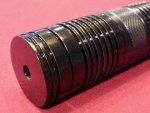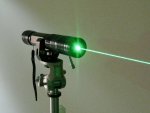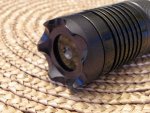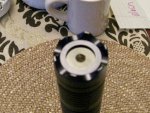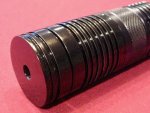Benm
0
- Joined
- Aug 16, 2007
- Messages
- 7,896
- Points
- 113
Stainless isn't that well a thermal conductor, though it's by no means useless either.
Aluminium would probably be the material of choice in most cases though, as it's lighter, cheaper, easier to machine and also has better thermal conductivity. Also anodization can make it very durable.
Copper would also be good in terms of thermal conductivity, but is harder to machine and more expensive compared to aluminium, though it does make better electrical connections which could be a consideration if you use the host body to carry supply currents (which is done in most handheld/pointers).
Neither really is the big issue though: the biggest thermal resistance of a total system usually is that between housing and air. In many things we solve this problem by having forced air flow (like in your laptop or car) but this isn't all that feasible for portable lasers - though there are some designs that actually have it.
My point about duty cycles is that it's often idiotic: You get something like 2 minutes on, 1 minute off. This effectively means that your existing heatsink is already 2/3rds of the way there from being able to run the laser continuously.
So no, it doesn't have to be gigantic to allow continuous operation at all, it needs about 50% more surface area to work. Practically it could have to be a bit bigger than that 50% due to airflow constraints and such.
But the idea that you can have a laser the size of a pen that can operate 2 minutes on, 1 minute off would have to become something like the size of a 4D maglite is completely ridiculous.
Aluminium would probably be the material of choice in most cases though, as it's lighter, cheaper, easier to machine and also has better thermal conductivity. Also anodization can make it very durable.
Copper would also be good in terms of thermal conductivity, but is harder to machine and more expensive compared to aluminium, though it does make better electrical connections which could be a consideration if you use the host body to carry supply currents (which is done in most handheld/pointers).
Neither really is the big issue though: the biggest thermal resistance of a total system usually is that between housing and air. In many things we solve this problem by having forced air flow (like in your laptop or car) but this isn't all that feasible for portable lasers - though there are some designs that actually have it.
My point about duty cycles is that it's often idiotic: You get something like 2 minutes on, 1 minute off. This effectively means that your existing heatsink is already 2/3rds of the way there from being able to run the laser continuously.
So no, it doesn't have to be gigantic to allow continuous operation at all, it needs about 50% more surface area to work. Practically it could have to be a bit bigger than that 50% due to airflow constraints and such.
But the idea that you can have a laser the size of a pen that can operate 2 minutes on, 1 minute off would have to become something like the size of a 4D maglite is completely ridiculous.





